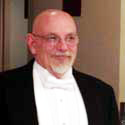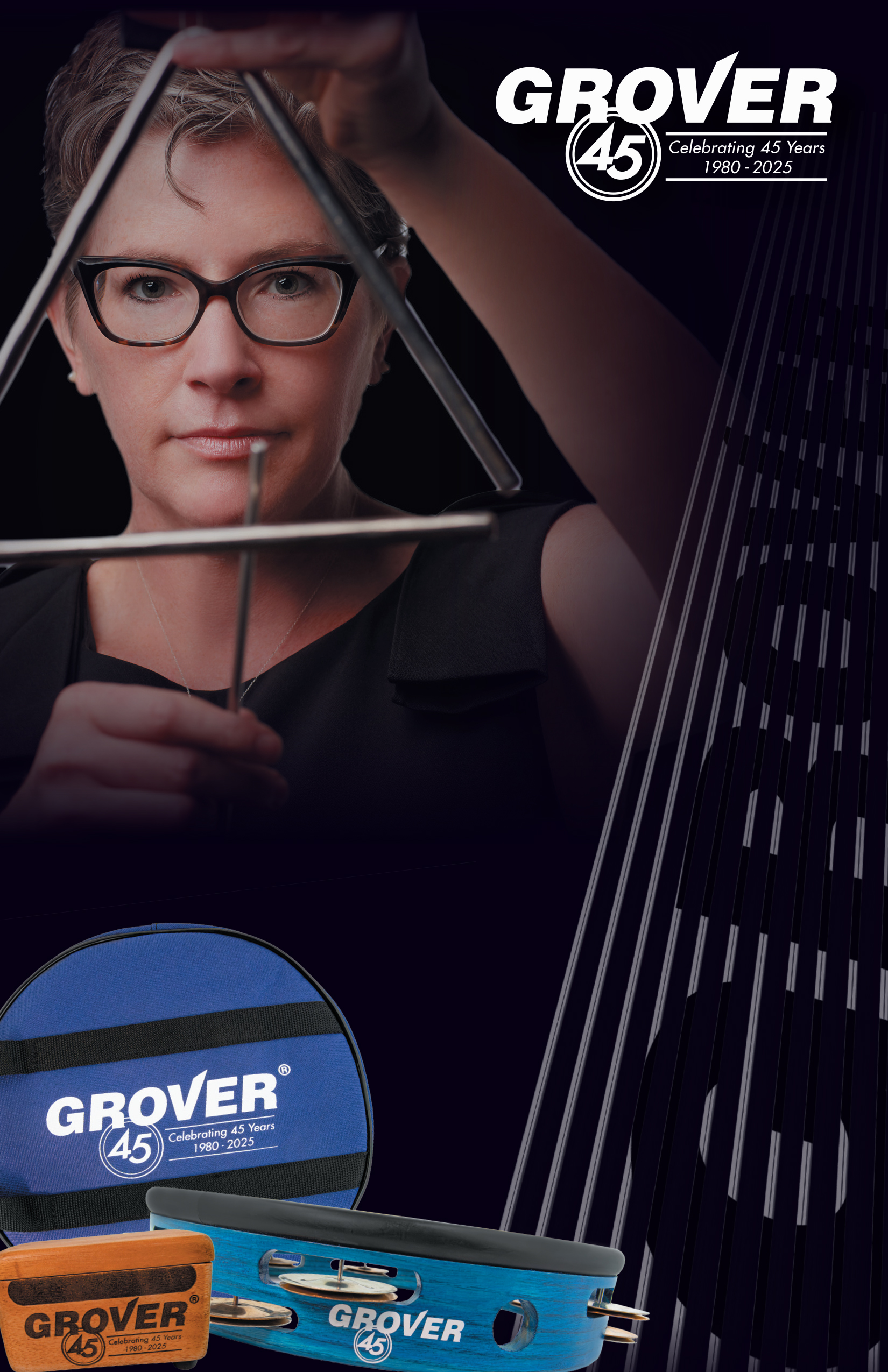 Many percussionists delving into the musical theater world, for the first time, find this new venture a bit daunting. Often the classical training acquired doesn’t fully prepare one for playing a musical theater show. The evolving process of performance preparation goes far beyond the reading of notes and rhythms. The theatrical percussionist must also develop a clear plan of instrument placement, technique strategies, and body choreography leading to consistent performance. It is equally important that once the instrument setup is determined, it is consistently employed throughout the preparation period.
Many percussionists delving into the musical theater world, for the first time, find this new venture a bit daunting. Often the classical training acquired doesn’t fully prepare one for playing a musical theater show. The evolving process of performance preparation goes far beyond the reading of notes and rhythms. The theatrical percussionist must also develop a clear plan of instrument placement, technique strategies, and body choreography leading to consistent performance. It is equally important that once the instrument setup is determined, it is consistently employed throughout the preparation period.
The following guidelines summarize an eight-step process that should give the new theater percussionist a better understanding of what will be necessary, especially in terms of planning.
 Step 1: Analyze the book to determine the instruments needed. Creating a list of
Step 1: Analyze the book to determine the instruments needed. Creating a list of
instruments, if not supplied, is the first step in preparation. The percussionist must also be well versed in any specific stylistic performance techniques needed for the music.
Step 2: Identify the primary instrument. It is around this instrument that the percussionist builds the percussion console or setup. The drum set and the orchestral books, basically describe the different types of books found in this genre and require a similar process in the preparation for performance. The important point here is, in the case of the drum-set book, the process of determining instrument placement is shortened because the drum set is the primary instrument.
The addition of other instruments are then incorporated into this existing setup. The percussionist performing the drum-set-centered book has more concerns regarding musical styles and choreography than the development of a setup plan.
The orchestral or hybrid book, on the other hand, creates the greater setup challenge. The primary instrument needs to be determined through the analysis of the book. This type of book focuses on other percussion instruments, other than a drum set. These books require extensive planning of instrument placement and choreography of movement. This “jig-saw puzzle” [author’s term] process is the significant difference between preparing this type of book and that of the drum-set book.
Step 3: Determine which instruments are to be placed near each other due to the need to play them simultaneously or consecutively in a musical passage. Making a list of the various instrument groupings help in this process.
Step 4: Create a preliminary instrument diagram (chart). The chart allows the percussionist to visually experiment with different instrument configurations to accommodate the instrument placement needs identified in the previous step. Decisions regarding the positioning of instruments and the choreography of movement are determined by the demands of the music. The percussionist must design logical movements to allow for a musical performance. Physical characteristics of the performer must be considered. A percussionist who is right-hand dominate might prefer an instrument placement different than a left-handed player. Placement is important for both drum set and percussion instrument considerations. This is also the point in the planning that the percussionist may need to add duplicate instruments, like triangles and cymbals, to accommodate placement requirements within the setup.
Step 5: Assemble the setup with the instruments. Once a preliminary plan is devised, the percussionist is advised to assemble and play through the book to assess the efficiency of the planned setup. This is the point that alternate instrument placement, unorthodox playing techniques, special mallet and stick choices, and choreography of movement are to be weighed.
Step 6: Assessment of the actual performance space needs to be considered at this point. Measurements need to be taken to assure that the instruments will fit in the performance space. If visiting the venue is not possible, communication with venue personnel regarding dimensions of the area is critical. Once the space is defined, adjustments can then be made to the existing setup.
Setups can be condensed by using smaller or abbreviated mallet instruments, electronic
instrument substitutes, as well as pedal and mechanical devises. In instances where the book is written for two players, but only one is hired, the possibility exists that some instruments may must be eliminated. The percussionist may be asked to incorporate crucial aspects of one book into the other, creating a composite book. This scenario is very common in regional and local theater productions due to financial and space limitations. These decisions need to be cleared with the musical director.
Step 7: Marking of the book becomes the next step in preparation. All cuts, cues, repeats, mallets changes, timpani tuning changes, and special instructions need to be entered the performance book. All markings should be clear, legible, and written in pencil (so they can be erased and/or changed.
Step 8: The final step is to move the setup into the venue. During the rehearsals prior to the first performance, the percussionist must be flexible and prepared to make changes with any aspect of performance, including mallet/stick and instrument choices. Through the described preparation, the percussionist will be ready to perform efficiently
and have a working knowledge of alternate possibilities, should changes be necessary.
 Dr. Peter DeSalvo, a native Long Islander, has directed school concert and jazz bands as well as numerous other ensembles for over 30 years. Dr. DeSalvo is a highly respected conductor, having worked with All-County and select concert and jazz bands in the Tri-state area. He earned his Bachelor of Music (BM) from the Crane School of Music, State University College at Potsdam, New York under the watchful eye of Professor James Petercsak, and received his Masters of Science (MS) from C.W. Post College of Long Island University, Greenvale, New York. Pete also studied 5 years with his mentor/teacher, Henry Adler, and is currently, under the tutelage of Bryan Carrott, working toward his Doctorate of Musical Arts degree at Five Towns College. Dr. DeSalvo is currently Director of Bands at Sayville High School, New York, and Percussion Instructor at Five Towns College, Dix Hills, New York. He is the Downstate Vice President of the NY chapter of PAS, a member of the PAS Education Committee and chair of the PAS FUNdamentals Sub-committee.
Dr. Peter DeSalvo, a native Long Islander, has directed school concert and jazz bands as well as numerous other ensembles for over 30 years. Dr. DeSalvo is a highly respected conductor, having worked with All-County and select concert and jazz bands in the Tri-state area. He earned his Bachelor of Music (BM) from the Crane School of Music, State University College at Potsdam, New York under the watchful eye of Professor James Petercsak, and received his Masters of Science (MS) from C.W. Post College of Long Island University, Greenvale, New York. Pete also studied 5 years with his mentor/teacher, Henry Adler, and is currently, under the tutelage of Bryan Carrott, working toward his Doctorate of Musical Arts degree at Five Towns College. Dr. DeSalvo is currently Director of Bands at Sayville High School, New York, and Percussion Instructor at Five Towns College, Dix Hills, New York. He is the Downstate Vice President of the NY chapter of PAS, a member of the PAS Education Committee and chair of the PAS FUNdamentals Sub-committee.

Leave a Reply